By TREVOR HOGG
By TREVOR HOGG

MPC Episodic created a post-apocalyptic environment
for The Witcher. (Image courtesy of MPC and Netflix)
When it comes to witnessing what is achievable with visual effects, no longer does one have to go to a theater, as high-end episodic has essentially become a long form cinematic experience that can be enjoyed by turning on a television or mobile device. This is not going to change with streamers spending billions of dollars to create content to stand apart from their like-minded competitors. The result is an impressive array of shows that are not lacking in storytelling ambition, whether it be The Wheel of Time, The Witcher, Foundation or The Book of Boba Fett. Virtual production has become synonymous with The Mandalorian, but this innovative methodology is only an aspect of the visual effects landscape which continues to evolve technologically. What does the future look like for the visual effects industry and episodic productions in the pandemic and post-pandemic era? This is a question that we try to answer by consulting the players responsible for producing the wealth of content that is available for viewers to watch.
Robin Hackl, Visual Effects Supervisor & Co-founder, Image Engine
“The requirements of television work are identical to feature film work in many ways. But back then it was much less resolution involved with the final output. Interestingly, we became known as a television visual effects house, and that precluded us from actually doing feature film work. It came with a stigma back in those days and was a large barrier that we had to break through. District 9 was a tipping point of recognition of us being able to execute on large-scale work.
“Shawn Walsh [General Manger and Executive Producer, Image Engine] has done a good job of holding the line. Placing the value on what we deliver to the client and making them understand what that value is and why it is of value. The shortened timelines have been the long-term progression ever since I could remember. Coupled on top of that are the demands. Now the expectations are far greater than what they were. Where is that breaking point? It is up to us to hold the line as best as we can and inform our clients what our capabilities and capacities are in order to avoid that.”

Image Engine, which contributed to The Mandalorian, was originally seen as a television visual effects studio, making it difficult to garner film work, but that paradigm no longer exists. (Image courtesy of Image Engine and Lucasfilm)
“Now the expectations are far greater than what they were. Where is that breaking point? It is up to us to hold the line as best as we can and inform our clients what our capabilities and capacities are in order to avoid that.”
—Robin Hackl, Visual Effects Supervisor & Co-founder, Image Engine
Drew Jones, Chief Business Development Officer, Cinesite
“You’re fine-tuning the teams of people attached to particular projects, ensuring that you have the right personalities dealing with the right style of work so that you can shortcut the processes and still deliver the quality threshold that it needs to be. You haven’t got the luxury of time to develop an idea across many months for the most part.
“Vendors having concept artists and art departments in-house are definitely a use for a quick, more cost-effective process to get closer to an answer within the visual effects post-production environment. We will often use conceptual artists to build imagery quickly to present an option to a production rather than go through a long gestation period of a CG build and compositing to get an idea across.
“There is more exploration into ideas through streamers. The projects, scripts and series are often filled with quite fantastical ideas that may have never seen the light of day on the big screen. The content I don’t think has changed. I don’t feel like we’re doing anything outrageously different. All visual effects have a complexity component to them, and at the end of the day it comes down to how far the directors want to push their thoughts and ideas.”
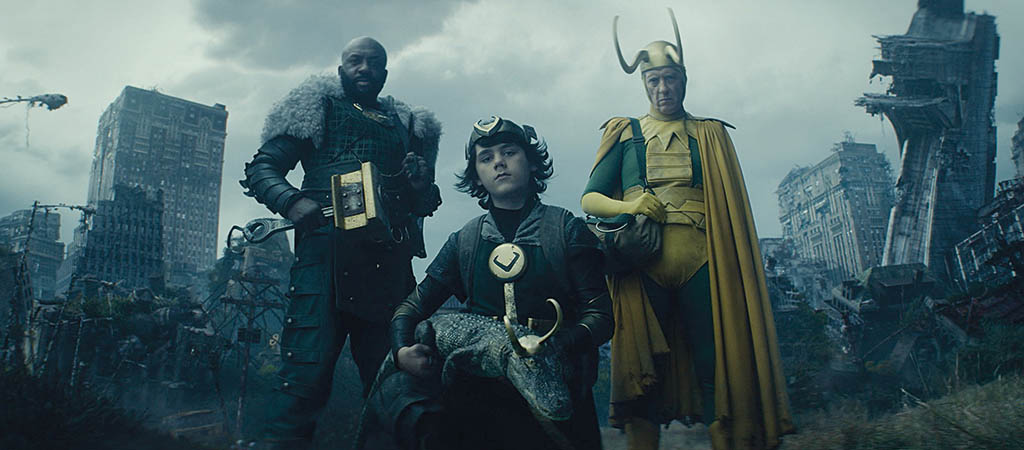
ILM had fun dealing with the Loki variants, including an alligator, for Marvel Studios and Disney+ series Loki. (Image courtesy of ILM and Marvel Studios)

Serving as a bridge between Seasons 2 and 3 of The Mandalorian is The Book of Bobba Fett. (Image courtesy of ILM and Disney)
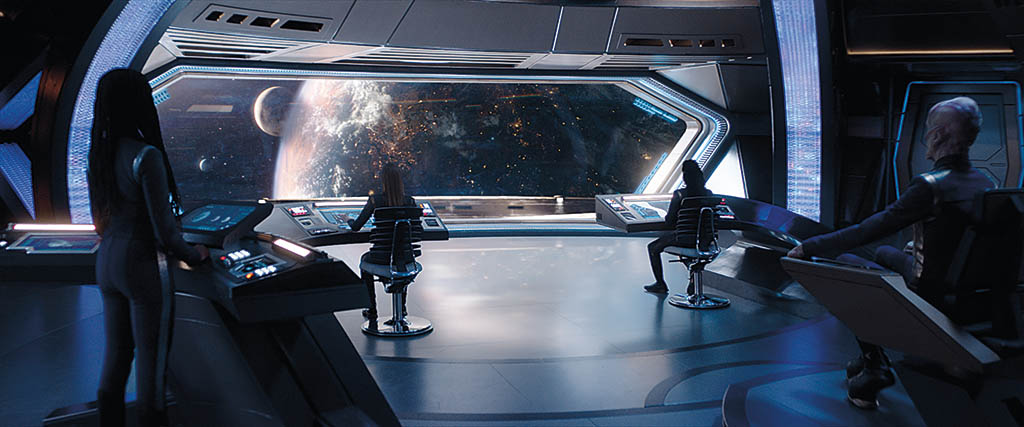
Final graded image by DNEG that was shot against greenscreen for Star Trek: Discovery. (Image courtesy of DNEG and Paramount+)
“The area that’s getting the most attention at the moment … is facial replacement work, with articles and papers going in-depth about how AI and computational analysis are making those kinds of computer-generated content far more photographic than before. It’s definitely an area that could lead to some very different approaches as to how visual effects are fundamentally implemented.”
—Paul Riddle, Executive VFX Supervisor, DNEG

A massive tarantula was created by Image Engine for the reimagining of The Twilight Zone. (Image courtesy of Image Engine and Paramount+)
Janet Muswell Hamilton, Senior Vice President, Visual Effects, HBO
“Right now, you have a lot of executives and post executives who have been doing a good job of producing the visual effects, who needed additional help because their slates were busy. The industry has just exploded. Being able to take work off of their plates to help them find heads of departments, facilities, and getting their heads around budgets –- that was the first thing I did. But what I needed was processes in place in order to make it easier for me so I wasn’t working in 10 different ways, because HBO has been a bespoke studio. I am a fan of tools and processes that help us with the creative process.
“House of the Dragon is utilizing the LED screens at Warner Bros. Studios Leavesden for a whole bunch of sequences. It’s 360 [degrees] and has a retractable roof. The ability to shoot magic hour for about a week is incredible. Yes, you need to do it upfront. Yes, you need a director who is willing to go that way. Ultimately, when you start to see the results, how beautiful things look and the stories you can tell that you couldn’t tell before because you couldn’t go there or afford it – it’s going to revolutionize how we do things. It’s a technology that is here to stay. It was an unexpected benefit of the lockdown. My biggest desire is to never ever shoot another greenscreen driving shot!”

Vision starts to disintegrate courtesy of Digital Domain for the Marvel Studios and Disney+ series WandaVision. (Image courtesy of Digital Domain and Disney)
Alex Hope, Co-CEO, beloFX
“The biggest barrier to growth for many visual effects companies for many years has been finding talented artists. There is a finite global talent pool, but it is one we are all working hard to build. We’re all making huge efforts to train and develop visual effects talent at every stage whether that’s in college, entry level into the industry or once people have gotten into the industry. Many visual effects companies are getting behind career development for artists. In the U.K. we are helped by organizations like ScreenSkills, who standardize training at various levels, and to ensure that the industry is working to support the education sector to bring new talent into the industry.
“Visual effects is perhaps the fastest-growing component of the film and television industry. It’s fantastic that we’ve seen an explosion in content creation of all types, and we’ve seen a consequent growth in demand for visual effects, so certainly the money spent on content creation is coming through to all parts of the industry, including visual effects. As we see more localized production for streamers, it’s going to be really interesting to see what opportunities this provides for partnerships between local visual effects companies and those companies in more established centers, like the U.K. and Canada, and that’s very exciting and interesting to us at beloFX.”
Lucy Ainsworth-Taylor, CEO & Co-Founder, BlueBolt
“With the global demand and need to get shows finished, work is being spread everywhere, often disregarding the rebate. We still cannot compete with the Indian prices, but the flip side is that the talent coming out of India now adds to the international remote marketplace. Netflix purchasing Scanline VFX is not a game-changer at all. Studios have purchased facilities before, and as long as they can keep feeding the work into the facility, it will work. With the content Netflix is making at the moment, it makes sense, but I would assume they should probably buy many more facilities for the amount of work they require! Scanline is a well-respected visual effects house; does this mean they will now only work on Netflix shows?”
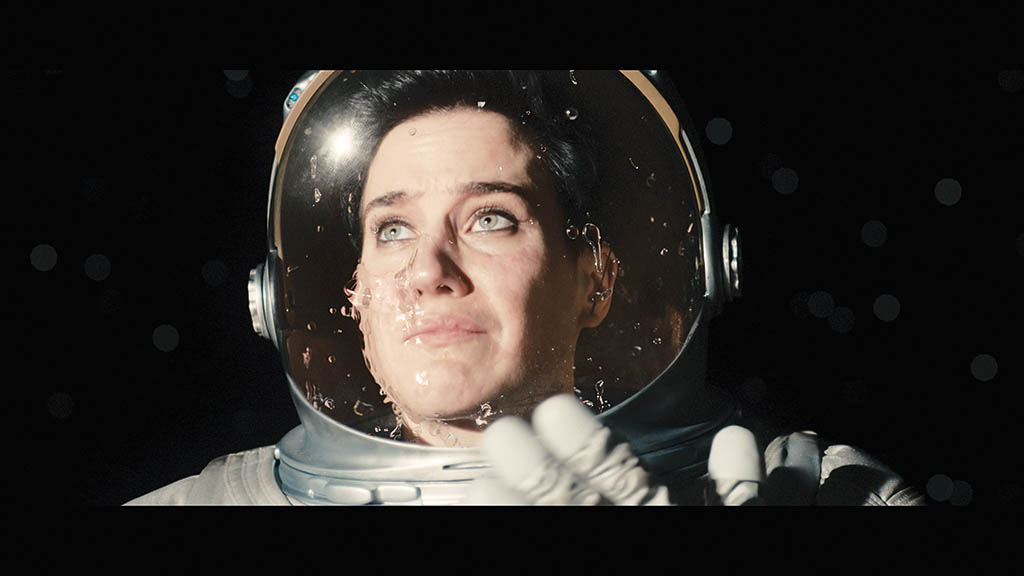
Bubbles were digitally created by Milk VFX for the outer space suffocation scene in Intergalactic. (Image courtesy of Milk VFX and Sky One)

The robot battle scene in Season 3 of Lost in Space. (Image courtesy of Digital Domain and Netflix)

An actual helicopter was used to create the impression of a spacecraft landing on the water in a scene from Foundation. (Images courtesy of Important Looking Pirates and Apple TV+)

The big screen gets adapted for the small screen with Image Engine bringing the world of Snowpiercer to life. (Image courtesy of Image Engine and TNT)
John Fragomeni, Global President, Digital Domain
“Working on award-winning projects like WandaVision, Lost in Space, Carnival Row and Loki was basically like making six to eight mini-films. We use the same tools on episodics that we use on features, and often the same team of artists. That has helped to accelerate our development on some of the tools we use, giving us the ability to handle the volume of work while still delivering quality.
“Some builds tend to lend themselves to features. For instance, the Free City game world we made for Free Guy or the 2.5 miles of New York City that we recreated for Spider-Man: No Way Home. But that doesn’t mean that you couldn’t do that for an episodic, given enough time and budget.
“One thing we are seeing more and more of on the episodic side is that the productions are coming to us with a detailed vision of what they want for the entire season. This helps us forecast schedules more finitely and identify breaking points when it comes to tight deadlines. From that, we can determine with the production where we can best serve the visuals, then coordinate with any other visual effects vendors the production may bring in. One of the more interesting by-products of the rise of elevated quality effects in episodics is that studios that used to compete for the same projects are now partners. As the demands for effects grow, we’ll probably see more groups involved.”
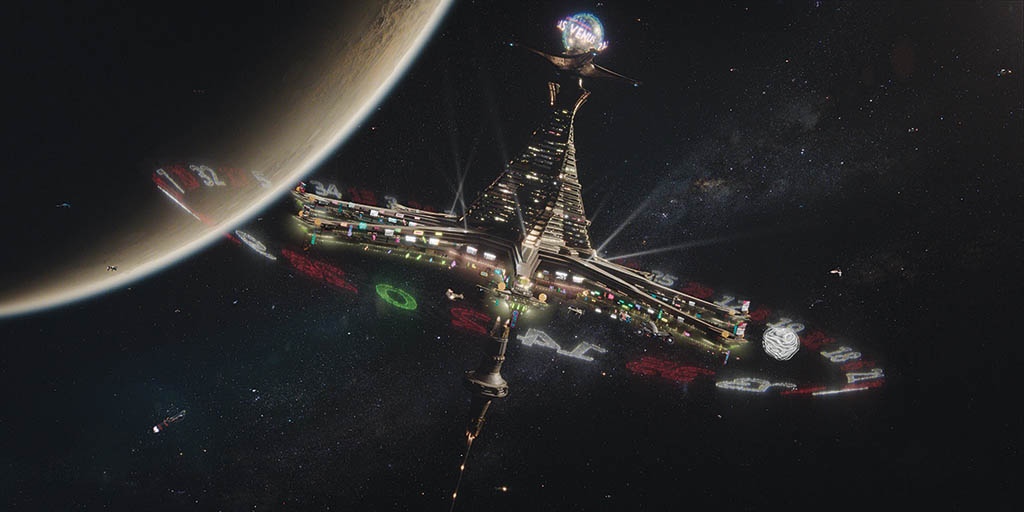
Rising Sun Pictures was part of the visual effects team on the live-action remake of Cowboy Bebop for Netflix. (Image courtesy of Rising Sun Pictures and Netflix)
Michelle Martin, Chief Business Development Officer, Milk VFX
“The speed with which streaming content has grown globally has given VFX houses the opportunity to raise the bar in VFX, to create high-end content for tentpole series and feature-length projects, in turn giving a wider range of artists the opportunity to work on interesting projects. Standards have certainly been raised.
“The networks and studios are engaging us earlier and are keen to discuss capacity with us, as well as share more information regarding their up-and-coming slates. There’s a keenness to share information and artists are being block-booked ahead of productions starting, which is where we should be to help develop and visualize the storytelling. We are seeing a very different landscape to where we were 10 years ago.”
Christopher Gray, Global Managing Director, Episodic, MPC
“In the short term, we’re already seeing the wider application of these techniques [virtual production, real-time, machine learning]. Every show we are working on in episodic employs at least one of these toolsets in some capacity, but I think the greatest opportunity, as silicone begins to catch up, is the ability to iterate more quickly, particularly in animation. In the next five years, we’ll see more widespread adoption of real-time and near real-time GPU rendering for final pixel. The technology is close, but it’s the development of existing workflows and the continued widening of the knowledge base that needs to expand to capitalize on this moment.
“We’re seeing the rise of great new prospects for counter programming, film and episodic projects that would struggle to find an audience five years ago, and we’re doing so more and more now thanks to strategic work in this space by Amazon and Apple leading the charge, and Netflix particularly so, with its commitment to international and local-language film and series and limited theatrical releasing. The exciting aspect is that as studio operations become more integrated and these two mediums converge, film production can benefit greatly from these efficiency gains, and episodic production can benefit from a knowledge base carved at the highest level.”
David Conley, Executive VFX Producer, Weta FX
“The bidding process has changed due to sheer demand, and streamers have a completely different greenlight process than the traditional studio system. Where once we had the luxury of bidding over several weeks against a schedule that was fairly developed, and you could bid down to the crew weeks, we are now being asked to turn around more bids in less time, days even. To drive confidence in our bidding system, we’re relying on a more robust set of analytics to help drive the bidding process. That said, this means we really rely on the perception and skills of our bidding team because no project is similar, and analytics and performance metrics can never replicate the creative process. We rely on our bidding team to have great creative skills when reading and breaking down a script before applying metrics based on analytics.
“I would say there’s greater narrative risks being taken in episodic, but more technical and creative risks in film. That said, the bar is raised across the board for both episodic and theatrical. There’s more being spent in episodic [than previously] but at a lower price point per shot, with the expectation that results are feature-level quality. To date, features are still where, as an industry, we are being asked to produce groundbreaking visual effects. However, streaming services mean that mid-range projects now have direct access to wide audiences, so our challenge becomes leveraging our emerging technologies from the feature side to help produce high-end-caliber visual effects across multiple episodes, within the schedule demands of episodic, at a viable price point that works for our industry.”
“There is more exploration into ideas through streamers. The projects, scripts and series are often filled with quite fantastical ideas that may have never seen the light of day on the big screen.”
—Drew Jones, Chief Business Development Officer, Cinesite

Fantasy has become a prominent genre on the streaming services, with DNEG taking part in Shadow & Bone for Netflix. (Image courtesy of DNEG and Netflix).

Making use of extensive virtual production is the HBO prequel House of the Dragon, which stars Emma D’Arcy as Princess Rhaenyra Targaryen and Matt Smith as Prince Daemon Targaryen. (Image courtesy of HBO)
Måns Björklund, Executive Producer, Important Looking Pirates
“Virtual production, real-time and machine learning are becoming more common, or even standards nowadays. With moving more work into prep instead of post, visual effects becomes even more involved before anything has been shot. For sure, there is more work around than ever. However, finding artists is harder than ever, and costs have also risen. We spend a lot of time finding artists and developing them in-house. Instead of just having a few clients doing high-end work, nowadays the demand is almost doing 10 mid-to-high-end features per season of episodic work. Due to shorter turnarounds, there is a more ‘going direct to the goal instead of trying all possible versions.’ The room for experimentation depends mostly on when you get involved with a project and how long a schedule you have. I feel there is more room to rebid and not have ‘fixed’ bids. It’s a constant discussion and collaboration with clients to get the best results within the budget and time. Important Looking Pirates don’t have facilities around the world. We are trying to do our thing and focus on the quality of our work.”
Paul Riddle, Executive VFX Supervisor, DNEG
“One of the main considerations in approaching our episodic work at the moment is the diversity within that work, whether that’s the creative requirements, the timescales involved or the financial requirements of the production. There’s so much scope for projects of varying sizes and complexities within episodic that there’s a real need for a degree of specialist skills and creative approaches in our artists across the globe.
“There has been an interest lately in ‘deep fake’ AI and machine learning, and how those things will eventually come to be utilized within our industry. There’s definitely an interest there and a buzz around it, and we’ve seen clients wanting to understand how it can be utilized sensibly without doing it just for its own sake, using the technology for a real creative impact.
“[T]he ‘feast-or-famine’ nature of the visual effects industry has somewhat dissipated to allow for visual effects facilities to have a more stable financial footing and thus provide more stability for their employees.”
—Stefan Drury, Executive Producer, ILM TV
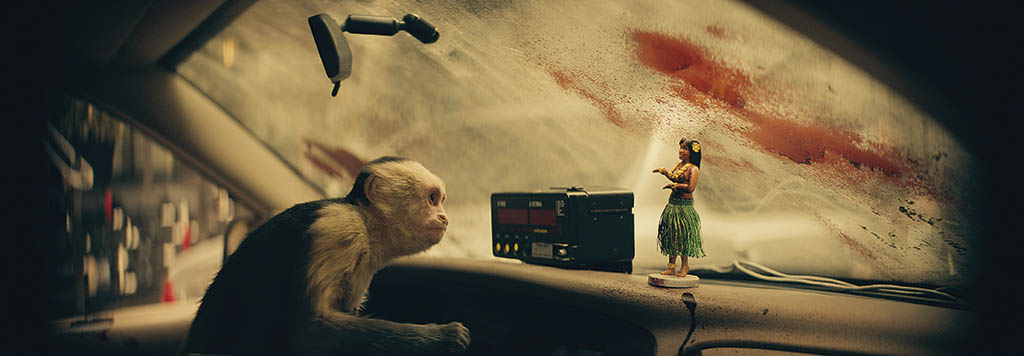
What was originally meant to be practical became a CG Ampersand created by ILM for Y: The Last Man. (Image courtesy of Hulu and ILM)

Expanding upon the Vikings franchise for Netflix is Vikings: Valhalla, with visual effects produced by MPC Episodic. (Image courtesy of MPC and Netflix)
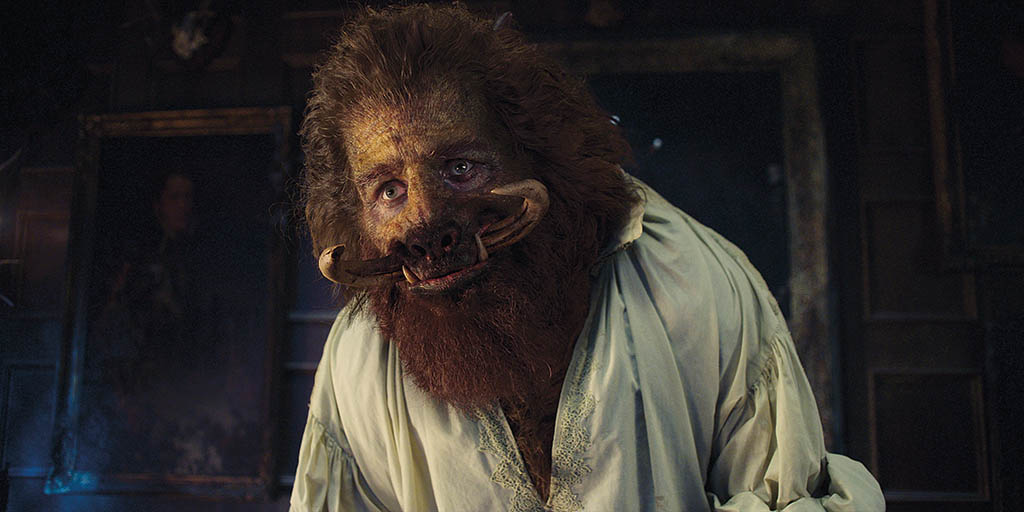
ILM was recruited to produce Nivellen, which was a combination of practical and digital effects, for The Witcher. (Image courtesy of ILM and Netflix)
“The area that’s getting the most attention at the moment, it seems, is facial replacement work, with articles and papers going in-depth about how AI and computational analysis are making those kinds of computer-generated content far more photographic than before. It’s definitely an area that could lead to some very different approaches as to how visual effects are fundamentally implemented.”
Stefan Drury, Executive Producer, ILM TV
“It’s been the busiest I’ve seen the industry in the 24 years I’ve been in it! More importantly, it’s also consistent, with a steady stream of projects in development and post at almost all times. It certainly feels like we’ve been able to better forward a plan for our crew, and the ‘feast-or-famine’ nature of the visual effects industry has somewhat dissipated to allow for visual effects facilities to have a more stable financial footing and thus provide more stability for their employees.
“There is still room for experimentation, especially through close collaboration with writers/director/showrunners in the episodic format. We’ve been involved with several episodic shows in which we’ve been part of the development, pitch and greenlight process, which have involved working closely with the clients to find creative methodologies to make projects possible. That said, this experimentation generally has to happen early in the production, agreed upon by all and adhered to, as the waterfall nature of episodic delivery and the sheer volume of material to be reviewed means post schedules leave little room for misdirection.”
Meredith Meyer-Nichols, Head of Production, Rising Sun Pictures
“In 2017, 100% of RSP’s work was on theatrical releases, and in 2021 we were 50/50 streaming to theatrical. As we move into 2022, this trend continues. Streaming projects are predominately series in nature, at about 35%. From our perspective, on the projects that we’re working on, they have large-scale budgets and demand the same kind of quality that RSP is known for. They’re essentially gigantic movies with thousands of visual effects shots and hours of content. RSP, in partnership with the University of South Australia, are delivering accredited courses in visual effects. In classrooms set up to mirror real-world production environments and with instructors who are working professionals, RSP rigorously trains students in the technologies and techniques they’ll need to succeed in an expanding global film industry. We have done a remarkable job of turning out job-ready graduates and have found that our graduates are in high demand with most major visual effects studios.”